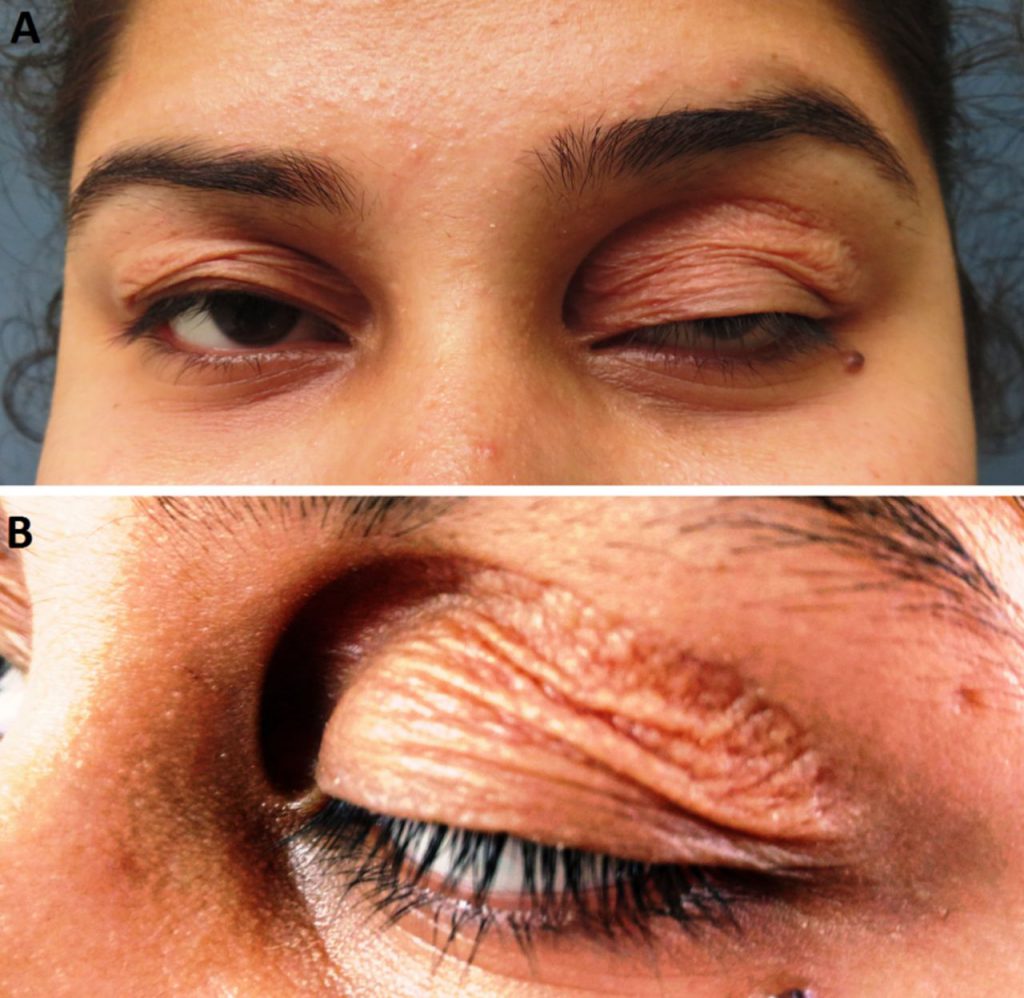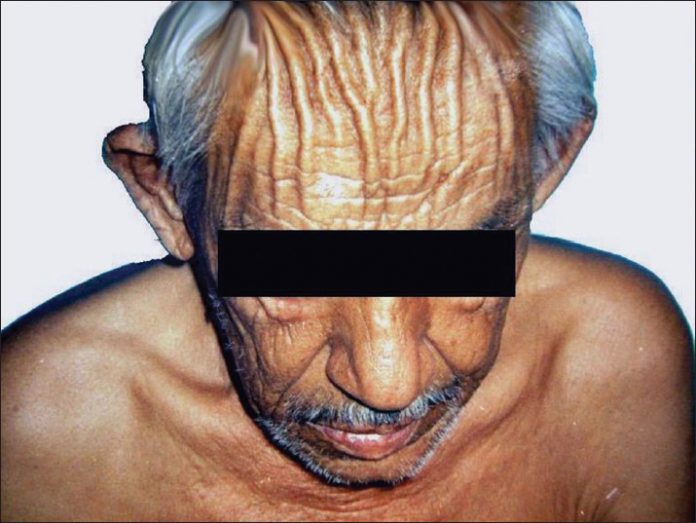Cutis Laxa, also called elastolysis, is a rare genetic disorder. In this condition, the skin, tendons, ligaments, muscles and other organs lose their elasticity. They become saggy. Many people find their skin loose and unattractive. Little do they know what saggy and loose skin actually mean. By saggy we mean folds of skin formed over their body. The affected individual appears much older than their original age. Imagine looking much older than you are!
A man of age 40 sought medical attention after 10 years of persistent wrinkled and hanging skin associated with other conditions. He was 30 years old when he noticed wrinkles forming on his body. Initially the wrinkles were confined to the forehead. As time passed the wrinkles and inelasticity invaded rest of his body in similar fashion. He also complained of hypertension and cervical spondylosis. Both has no connection with this condition. He had no family history of any relevant disorder.

Physical Examination
Upon physical examination, the medical practitioner found the patient quite old for his age. He was only 40 but appeared 70. He had multiple folds of skin on his forehead, neck, abdomen and back. His entire body was saggy and wrinkly. Moreover, the eyelids also had folds of skin. Apart from blepharochalasis there was no malfunctioning of eye. See the picture below to know what blepharochalasis is.

Lab reports were normal
Surprisingly, the lab reports of this patient were normal. There was no sign of abnormal values which could indicate any pathology. Complete Blood Count (CBC), serum electrophoresis, hepatic enzymes, erythrocyte sedimentation, blood biochemistry and routine urine analysis revealed absolutely normal reports.
Since lab reports were normal, therefore medical practitioners employed other protocols. Other procedures included chest X-Ray, electrocardiography and gastroscopy. They were also normal.
Histopathological Findings helped in diagnosis
Histopathological findings helped in diagnosing the patient with Cutis Laxa. A biopsy specimen was stained with Hematoxylin-eosin (H and E), Von Kossa and Verhoeff-van Gieson stain. The specimen from skin lesion of patient revealed fragmented elastic fibres. They showed uneven staining with granular appearance. Thanks to the histopathological findings whichaided the medical practitioners in diagnosing the patient with Cutis Laxa.

Cutis Laxa is a rare genetic disorder which involves connective tissues mainly. Only handful of individuals across the world are patients of Cutis Laxa. The limited record of patients restricts the medical science to form standard criteria for the diagnosis of Cutis Laxa. The exact cause, pathogenesis and symptoms are still under research.
Treatment is not very effective
Generally, the symptoms of Cutis Laxa include laxity of skin and connective tissues. There are folds of skin all over the body which makes the patient appear much older. Limited information means limited treatment options. In most of the cases, reconstructive surgery is suggested. However in cases where not much is possible pharmaceutical treatment is the only option. In this case, one capsule of Vitamin E was prescribed for 2 months with emollients for topical application.




